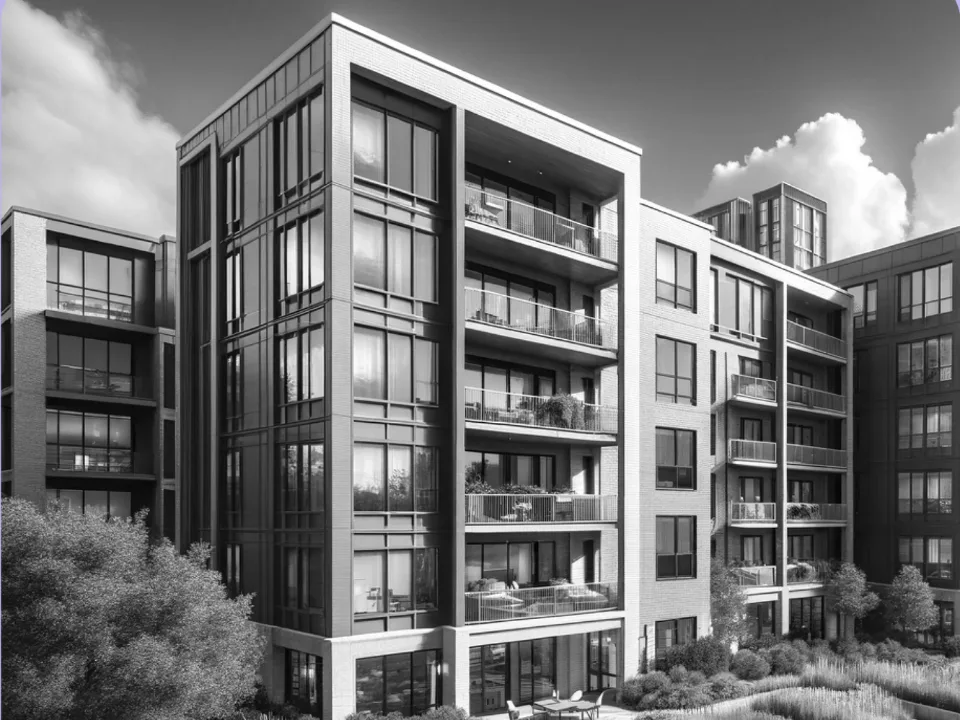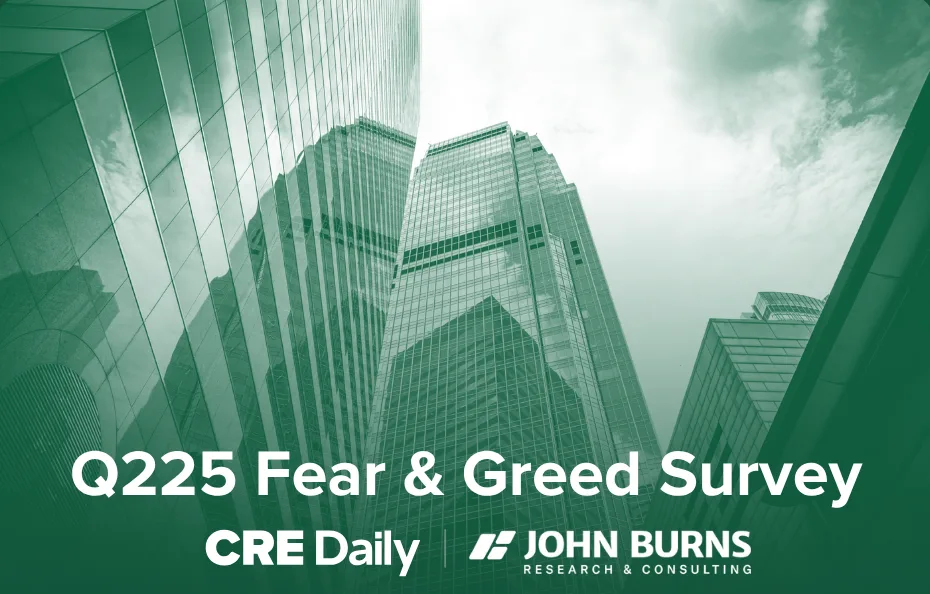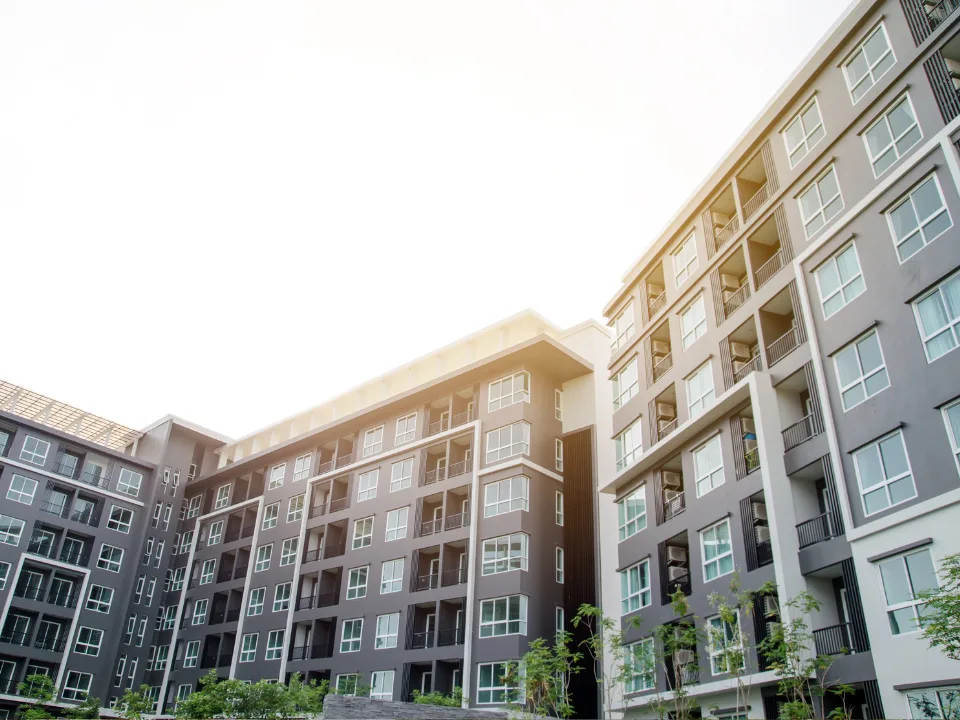The Enduring Strength of Commercial Real Estate
Despite economic setbacks, the $15T US commercial real estate industry remains resilient. San Francisco’s market is struggling as property owners halt loan payments and surrender keys to lenders. Brookfield, having faced losses on two L.A. towers, now grapples with financial difficulties in its $1 billion mall portfolio.
Together with
Good morning. While I owe my love for words to my mom and our Scrabble games, it was my dad who taught me the art of conveying more with fewer words. And no matter how much time passes, I always learn something new from our conversations. Sending heartfelt wishes to all the fathers out there for a happy 👨👧👦 Father’s Day.
Today’s issue is brought to you by techvestor, the data-centric investment firm reshaping the short-term rental market.
Market Snapshot
|
|
||||
|
|
*Data as of 6/16/2023 market close.
👋 First time reading? Sign up here.
FROM ASHES TO APEX
CRE Lives On: The Enduring Strength of Commercial Real Estate

Unfazed by countless economic upheavals and naysayers’ pessimistic refrains, the US commercial real estate industry, valued at $15T, is far from extinct.
Despite numerous economic setbacks and the doom-sayers’ chorus, the $15T US commercial real estate industry is not dead. With over four decades of resilience, it’s successfully navigated everything from the turbulence of the 80s and 90s recessions to the trials of the Great Recession and the Covid-19-triggered downturn. This time will be no different.
CRE’s historic resilience: In past economic downturns, the CRE industry experienced substantial loan defaults, foreclosed assets, and considerable lost investment. In crises like the crash from 1987 to 1992 and the Great Recession, property values plunged dramatically, leading to many vacant properties and a surge in foreclosures. However, despite these adversities and predictions of its imminent demise, the CRE industry has consistently rebounded. A good example of this is the creation of the Resolution Trust Corporation in 1989, which sold foreclosed assets at a fraction of their original value, resulting in investors making significant profits later.
Adapting to challenges: The resilience of the CRE industry was further highlighted when it adapted to the challenges posed by the rise of online shopping, which led to a massive closure of physical stores. Many bankrupt retail companies, like Toys R Us and Sears, left behind empty retail spaces. But the CRE industry quickly repurposed these vacant properties, transforming them into profitable real estate assets. In each downturn, the industry has demonstrated its ability to pivot and recover.
➥ THE TAKEAWAY
The industry today: Currently, with interest rates rising at an unprecedented rate, the CRE industry is bracing for another potential downturn, primarily in the office sector. However, the industry’s proven resilience and adaptability gives cause for optimism. Firms like Blackstone are raising billions in capital to acquire distressed assets, demonstrating faith in the sector’s recovery. As history has shown, these challenging times often give rise to high return investment opportunities. Despite the challenges, the longevity of the CRE industry underscores its robustness and ability to recover from periods of distress.
⏩ Forward this article by clicking here.
TOGETHER WITH TECHVESTOR
Claim your share in the STR revolution
Ever dreamt of escaping the 9 to 5 grind to build an Airbnb empire? You’re not alone. CRE’s current economic woes may be giving you pause. And that’s understandable.
But what if you could achieve this without leaving your job or owning any rental properties?
Introducing Techvestor, the data-centric investment firm reshaping the short-term rental market.
With their proprietary software, the company’s platform analyzes over 18MM data points and 250+ markets, underwriting 100k properties each month.
Here’s the best part: Invest as little as $25,000 for passive income, and enjoy the benefits of zero loan liability and a share in a diverse portfolio (100+ homes).
ALARM BELLS RINGING
Defaults Rise, Sparking Concerns for San Francisco’s Commercial Property Stability

San Francisco’s commercial real estate market is facing a challenging situation as owners of prominent properties in the city have ceased loan payments and returned the keys to lenders.
Major defaults: Westfield and Brookfield Properties have stopped paying on a $558 million loan for the city’s largest shopping mall, and Park Hotels & Resorts will hand over ownership of two prime hotels after defaulting on a $725 million loan. These defaults reflect the city’s struggles with declining tourism, tech downsizing, and concerns over crime and homelessness.
Potential consequences for lenders: The defaults in San Francisco’s commercial real estate market have everyone bracing for impact, and it’s not looking pretty. Lenders, including JPMorgan, Deutsche Bank, Wells Fargo, and Bank of America, may be forced to offload properties at significant discounts to minimize their exposure and protect bondholders. Property values have taken a nosedive, leaving some loans completely underwater. And with banks tightening their purse strings, property owners will have a harder time refinancing their debts.
How bad is it? San Francisco’s CRE market is in distress, but it’s not just about defaults and property values. Office towers are selling at rock-bottom prices, and big names like WeWork and Elon Musk’s Twitter are defaulting on loans and rent. Even tech giants like Google and Meta are subleasing their office spaces, dampening the demand. With a staggering 30% office vacancy rate, the highest among major US cities, the situation is grim. Hotels are feeling the pinch too, with lower rates and fewer bookings. The growing defaults also cast a shadow over the city’s tax revenues and economic future.
➥ THE TAKEAWAY
Uncertain future: San Francisco is stuck in a bit of a pickle with its commercial real estate market. The declining property values are like a domino effect, causing retailers and tech companies to pack their bags and hit the road. With fewer people strolling around, the city’s charm is slowly fading away, making it harder to attract tourists, workers, and shoppers. And here’s the kicker: this downturn also means less money in the city’s piggy bank. A projected budget deficit and limited resources for public services and revitalization efforts are putting a damper on the city’s recovery plans. Once that vibrant energy is lost, it’s like trying to catch lightning in a bottle.
⏩ Forward this article by clicking here.
Around the Web
📚 Read: William Ury’s “The Power of a Positive No: Save the Deal, Save the Relationship” and “Still Say No” provide readers (and brokers) with a three-step ‘Positive No’ method, resistance to manipulation and practical advice with impactful examples.
🖥️ Watch: Jonathan Litt, the Founder and CIO of Land and Buildings and an activist investor, joins ‘Fast Money’ to discuss his latest insights on Alexandria R.E., the current state of San Francisco’s real estate market, and more.
🎧 Listen: On this episode of GreyCast by Greysteel, Daryl Carter, CEO of Avanath Capital Management, discusses his expertise in debt and equity ventures, the challenges of starting a business, and more.
FORECLOSURE AND DISTRESS
Brookfield Navigates Debt Challenges Across 8 Shopping Malls

(clockwise from top-left) Woodbridge Center in North Jersey, Lower Manhattan’s Brookfield Place, Virginia’s Chesterfield Town Center and Michigan’s RiverTown Crossings (Getty, TripAdvisor, Rivertown Crossings, Chesterfield Town Center, TopGear/Public domain/via Wikimedia Commons)
Brookfield, after substantial losses on two L.A. towers, now confronts financial strife with its $1 billion mall portfolio. Notably, the North Jersey’s Woodbridge Center is undergoing foreclosure following a $225 million loan default, worsened by pandemic effects.
What happened: Woodbridge Center’s troubles escalated when Sears, a key tenant occupying a quarter of the mall’s rentable area, departed in April 2020. This led to Brookfield falling into arrears on debt service within a month and the loan being shifted to special servicing due to imminent default. Although attempts are being made toward a resolution, the mall’s financial health is precarious. Its debt service coverage ratio is a mere 0.42, with cash flow not covering the loan payments. Occupancy is also projected to decline further amidst the ongoing struggle to settle the debt.
The wider picture: The crisis at Woodbridge Center is part of a larger issue. Seven other malls owned by Brookfield across the Midwest and East Coast are flagged for distressed debt, all being at least 60 days delinquent. The Brookfield Place in Lower Manhattan also appears shaky, with its debt service coverage ratio at a low 0.66, despite being 92% occupied. Various properties indicate Brookfield’s potential surrender, with some considering deeds-in-lieu of foreclosure.
➥ THE TAKEAWAY
Why it matters: Brookfield’s struggles underscore the fallout of the pandemic on mall owners, with declining property values and rising defaults. Their forward strategy, possibly including workouts or foreclosures, could guide others in similar situations. Despite adversity, their successful $281 million loan modification suggests that strategic financial decisions can lead to resolution.
⏩ Forward this article by clicking here.
✍️ Daily Picks
-
Unexpected gain: U.S. retail sales in May defied expectations by rising 0.3%, boosted by increased purchases of motor vehicles and building materials, according to the Commerce Department.
-
Judges rule: Developer Joel Schreiber, who was WeWork’s first investor, has been ordered to pay almost $100M to entities linked with Starwood Capital Group and Goldman Sachs for violating loan agreements.
-
Record EV investment: St. Joseph County, Indiana, will see its biggest investment in 75 years as General Motors and Samsung SDI commit $3B for an EV battery plant to support GM’s growing electric vehicle needs.
-
Job boom: Texas marks 27 months of consistent job growth, adding a remarkable 51,000 positions in May, the highest among all states, according to recent workforce data.
-
Safety issues: The collapsed condo in Surfside, Fla., had a pool deck with severe strength deficiencies, violating building codes and straying from original plans, federal investigators reported.
-
Tax surprises: Residential tenants in legal disputes with landlords may face unexpected taxes on their settlement amounts, while commercial disputes are less likely to have tax surprises.
-
Downtown LA finds hope: City council signed a 297,500 sq ft lease at the Gas Company Tower, currently in receivership. Pending Mayor Karen Bass’s approval, it would be the year’s largest lease in greater L.A.
-
The cost of debt: Morgan Stanley’s Michael Bluhm characterizes the hotel industry as facing a “liquidity crisis” due to the combination of robust hotel operating metrics and a weak debt environment.
-
Reporting issues: The Real Deal’s analysis of Compass’s earnings reports reveals that two years after its IPO, the company continues to face significant challenges in its financial reporting.
-
Buildings underwater: Pimco’s Columbia Property Trust saw a 30% reduction in the value of its seven-building office portfolio after defaulting on $1.7 billion in loans.
-
BTR demand: In a year marked by economic turbulence affecting all asset classes, single-family build-to-rent (BTR) communities have thrived, indicating a shift from home ownership to renting.
-
Increasing risks: Top US financial regulators are sounding the alarm in scrutinizing banks’ exposure to commercial real estate amid rising vacancy rates.
-
Up for sale: Golub & Co. plans to sell the historic Burnham Center property in Chicago’s Loop at a potential loss. The 22-story building was acquired four years ago for $80.3M.
-
Property insurance premiums: Expenses are rising faster than revenues for affordable housing properties, but property owners are benefiting from significant rent growth.
-
The next frontier: Post-pandemic, the surge in outdoor activities has boosted rustic lodgings, RV resorts, and marinas. Monarch Alternative Capital, a leading investment firm with $11B in assets, is entering this investment trend.
-
AI to work: Texas brokerages, like Keller Williams City View in San Antonio, have adopted ChatGPT through LandOnEarth for clients to find suitable properties.
-
Housing availability: The U.S. is facing a severe shortage of affordable housing, with experts predicting a future decline in supply. But this didn’t happen overnight.
📈 Chart of the Day
Amidst a significant influx of capital, commercial real estate witnessed a substantial rise in property values over the past two decades. Total returns were primarily driven by appreciation rather than income growth, and performance showed a strong correlation across metropolitan markets.
What did you think of today’s newsletter? |
HIT THE INBOX OF 65K+ CRE PROFESSIONALS
Advertise with CRE Daily to get your brand in front of the Who’s Who of commercial real estate. Subscribers are high-income decision makers, investors, and C-suite executives always looking for their next investment, product, or tool.






















